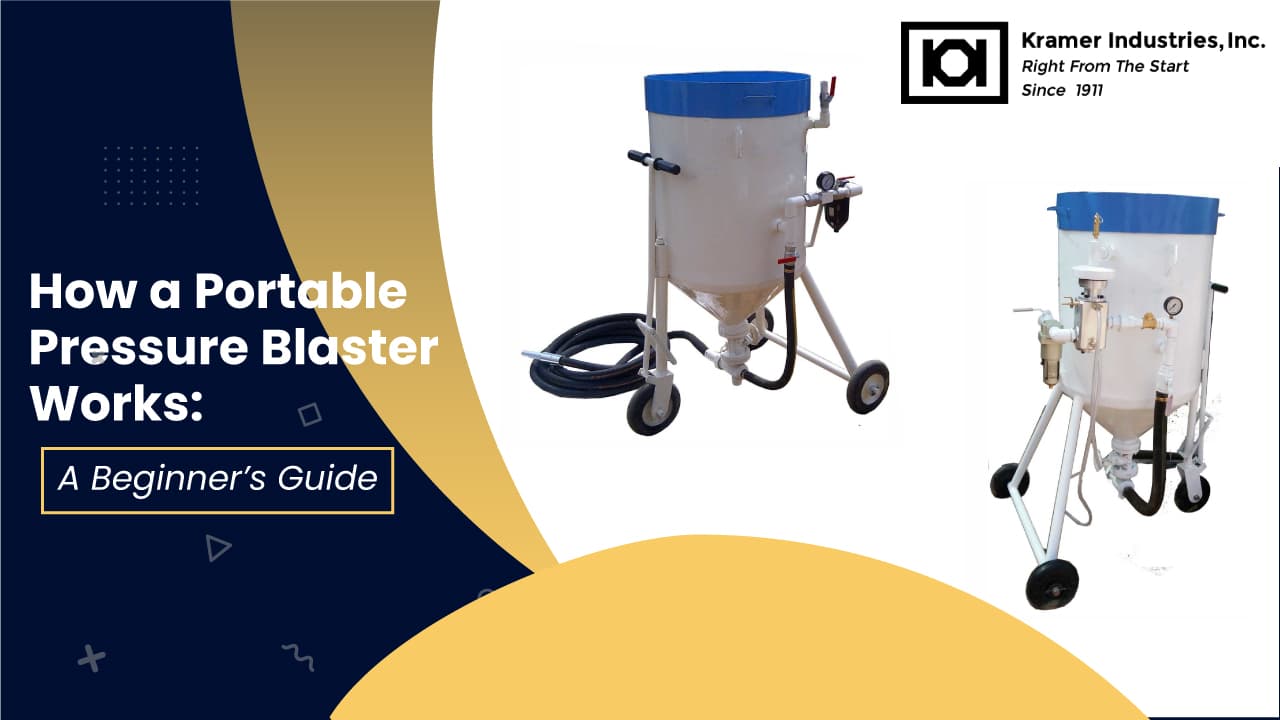Rust, paint, corrosion, and stubborn grime do not stand a chance when the portable pressure blaster rolls into action. It may not boast sleek lines or polished chrome, but this machine is very good at obliterating surface problems with a steady roar of compressed air and grit. For those curious about how this rugged unit actually operates, or for newcomers just stepping into the world of surface treatment, consider this your introduction to this machine that delivers with clarity.
What Exactly Is a Portable Pressure Blaster?
Picture a machine that is forceful, precise, and remarkably mobile. A portable pressure blaster is built to clean, shape, or roughen surfaces by pushing abrasive material. The materials could be steel grit, glass beads, or even crushed walnut shells. The abrasives are pushed through a nozzle using high-pressure air. It’s most often used on metal surfaces, but with the right abrasive, it can handle stone, wood, or plastic just as easily.
What makes it special is its portability. This machine is built to roam. You’ll find it riding trailers, rolling through job sites, or tucked into corners of shipyards and fabrication yards. It’s the kind of machine that works where you work.
Why Use a Portable Pressure Blaster?
Surface prep is where every good coating begins. Rust and old paint need to be stripped, and the surface is ready for primer, paint, or epoxy.
A portable pressure blaster makes all of that happen faster and more thoroughly than manual scraping or chemical cleaners. It saves time, money, and labor, and you get better results.
Types of Sandblasting Machines
Blasting machines are of many different types:
- Suction Blasters: Pull the abrasive in through a hose using a vacuum-like setup.
- Pressure Blasters: Push abrasive out with high-pressure air for faster, deeper cleaning.
- Wet Blasters: Use water mixed with abrasive to control dust and reduce surface damage.
Among these, the portable pressure blaster is the main player of the group. It’s ideal for tough jobs and large surface areas.
How Does a Portable Pressure Blaster Work?
At its core, a portable pressure blaster has three main parts:
- The Pressure Vessel: Holds the abrasive media.
- Compressed Air Supply: Pushes the abrasive out.
- Blasting Hose and Nozzle: Directs the blast to the surface.
The Process: You fill the vessel with your chosen blasting media, connect the air supply, aim the nozzle, and pull the trigger. Compressed air pushes the media out through the hose and onto the surface. The result is a cleaner, smoother finish on your surfaces.
Safety First
Before you start blasting, suit up and make sure you’re protected. A portable pressure blaster kicks up a lot of dust and debris.
Basic safety gear includes:
- Air-fed helmet
- Blast suit
- Heavy-duty gloves
- Protective boots
This is because inhaling fine dust from abrasive media like sand can cause serious lung problems. Never blast without the right gear.
What Materials Can You Blast?
Portable pressure blasters are versatile. Here’s what they can handle:
- Rusty metal beams
- Coated pipes
- Old concrete
- Painted machinery
- Fiberglass repairs
However, do not blast thin sheet metal. A strong abrasive can damage or warp it. Use softer materials like walnut shells or plastic beads for more delicate jobs.
Media Options: What Do You Load It With?
You might think sand is the go-to media for blasting. But sand creates dangerous dust that can cause lung damage, so safer options are now used.
Here are a few popular choices:
- Steel Grit: Great for heavy rust and thick paint.
- Crushed Glass: Perfect for light-duty work.
- Walnut Shells: Gentle and effective for softer surfaces.
- Baking Soda: Works well for cleaning without damage.
Each medium has its own use, and your choice depends on the surface and the finish you want.
Beyond Rust Removal
Yes, rust removal is a big application of these blasters. But portable pressure blasters do much more:
- Prepare surfaces for industrial coatings
- Shape and texture metal for aesthetic appeal
- Clean equipment or engine parts
- Etch designs onto surfaces
It’s a fast, effective way to get materials clean and ready.
Wet vs. Dry Blasting
There are cases when a wet portable pressure blaster might be better:
- Working indoors with limited ventilation
- Need to control dust
- Prepping delicate surfaces
But for outdoor or large-scale jobs, a dry portable pressure blaster still leads the pack.
Tips for Beginners
- Always check your air supply—it needs to be dry and consistent.
- Use the right nozzle size for your media.
- Test on a small area first.
- Don’t reuse media unless it’s meant for recycling (like steel grit).
- Keep your gear clean and dry between jobs.
Conclusion
A portable pressure blaster may look simple, but it’s a powerful machine with a big impact. It saves time, improves surface quality, and cuts down on labor costs. Just make sure you pick the right media, follow safety rules, and maintain the equipment.
Whether you’re cleaning, prepping, or restoring—a portable pressure blaster is your best tool for getting results that stick. Explore high-quality portable pressure blasters and abrasive media at Kramer Industries—built for power, precision, and portability. Whether you’re restoring metal or prepping surfaces like a pro, Kramer has the tools that move with you.
Visit Kramer Industries today and gear up for cleaner, faster results.



